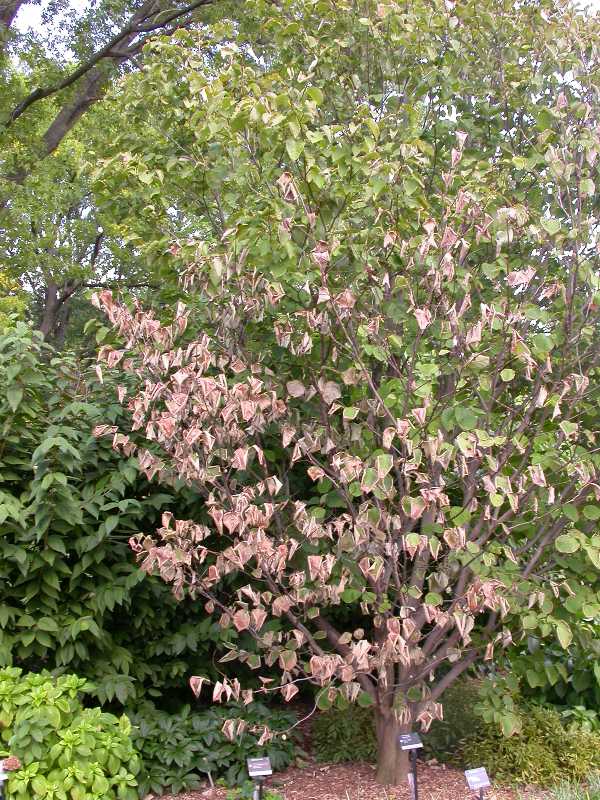 |
Frost cracks may have provided the entry point for the cankers that eventually killed this fragrant snowbell (Styrax obassia) |
Frost cracks develop in late winter to early spring often on the south west side of a tree at the site of a previous wound or branch stub. They occur when daytime sun heats the bark and underlying wood causing tissue expansion. Then with a sudden, sharp temperature drop, the outer bark layer contracts , more rapidly than the inner layers. The difference in contraction is particularly severe where there is an injured area. Tissue in the wound site does not contract as readily as healthy wood.
The cambium in the wound area has formed a different tissue, a ‘barrier zone’ that has different anatomical and chemical makeup from normal wood. This area becomes a plane of structural weakness and when stressed by rapid temperature change the wood separates along the barrier zone. The strain between the defective and healthy wood leads to the damage.
The splitting itself can sound like a rifle shot. The area involved shows as an elongated, vertical crack, or sometimes bulge, in the trunk. The area may callus over only to re-open the next winter. The area can also allow entry of insect and disease organisms.
Susceptible species include: maple, sycamore, apple, crabapple, ash, beech, horse chestnut, tuliptree
Integrated Pest Management Strategies
1. Treat trees well. Avoid trunk wounds: mowing injuries, weed whip injuries, improper pruning. Do not use wound paints/tar on the crack. They actually interfere with healing. Prune properly.
2. Do not fertilize late in the growing season. Wait until after last leaf drop in the fall or wait until after early spring thaw.
3. Provide a clean wound area. If the crack is ‘clean’ with neat edges and no loose hanging bark, leave the trunk alone. It will callus on its own. If there is a ragged tear with shredded bark, trim off the affected bark. Then trace around the wound with a sharp, sterile knife. This cut stimulates cambium growth and speeds healing. A half inch margin of bark around the wound can also be removed to give a clean edge around the crack. The edges will callus and eventually close over the wound.
4. Serious damage. If there is a large, serious crack, a professional arborist can do ‘lip bolting’ to save the tree.
Organic Strategies
Strategies 1, 3, and 4 are strictly organic approaches. Using an appropriate organic fertilizer would be a viable organic approach to Strategy 2.
More images:
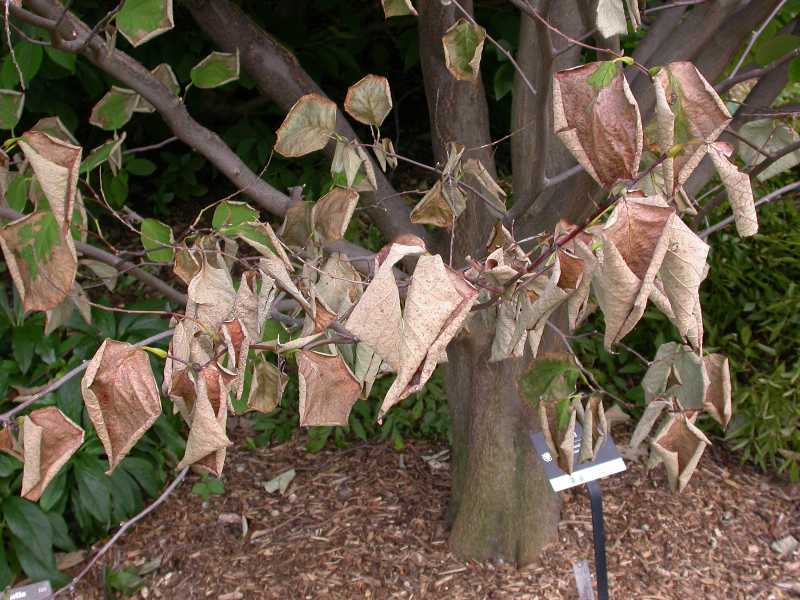 |
Scorch can indicate more serious problems, as on this fragrant snowbell (Styrax obassia) that died from stem cankers, which possibly entered through a frost crack.
|
|
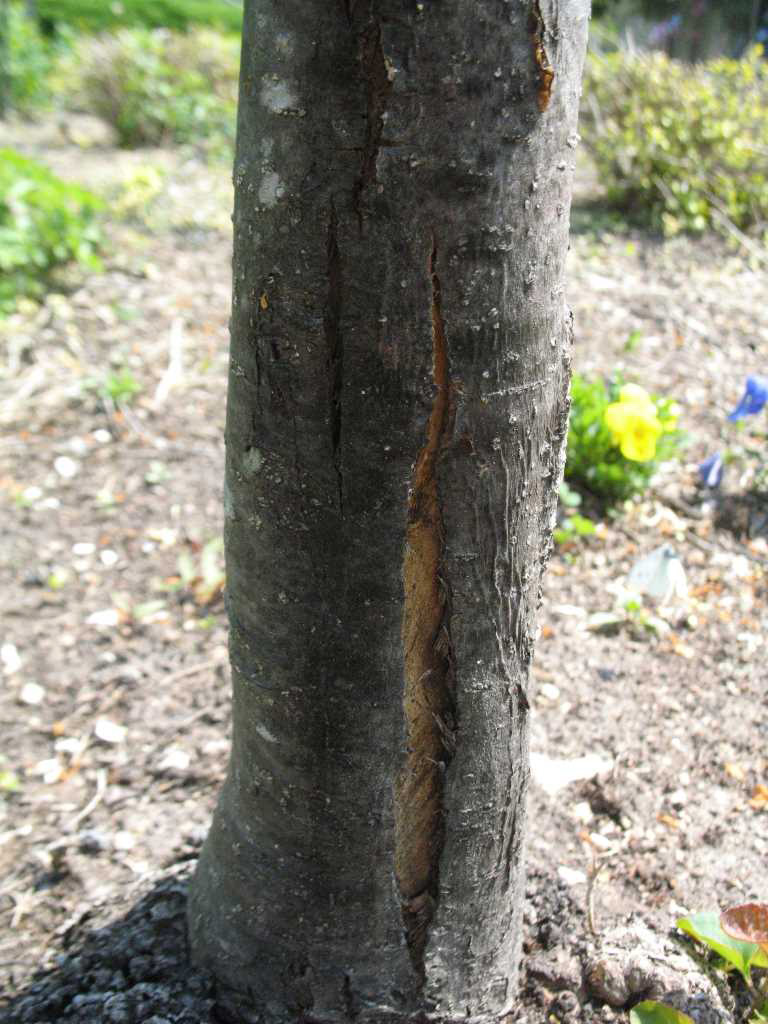 |
| Frost crack in bark |
|
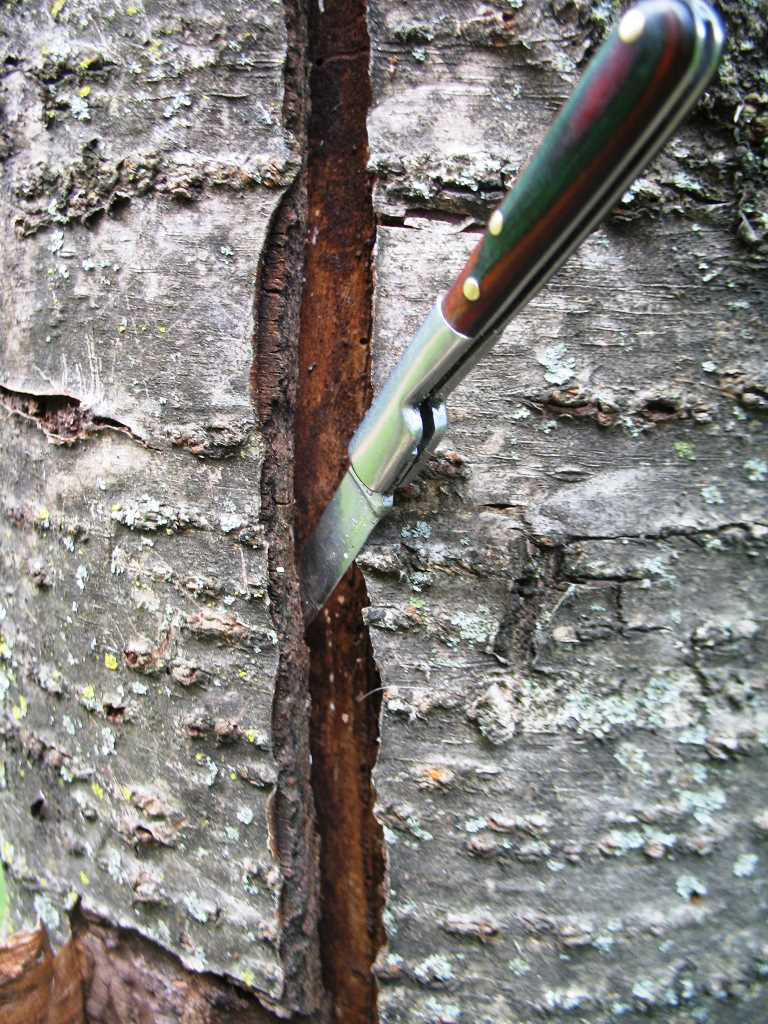 |
Splitting bark on cherry (Prunus) started as a frost crack. Note that behind the bark the cambium layer is dead.
|
|
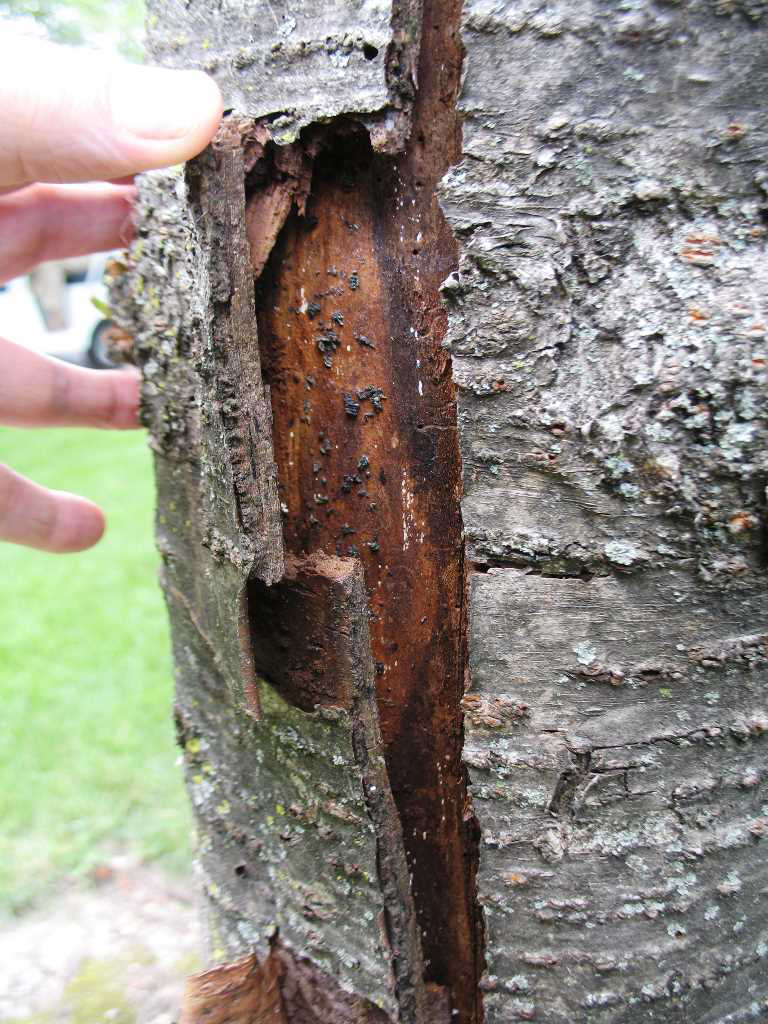 |
| Dead bark on cherry (Prunus). Started as a frost crack |
|
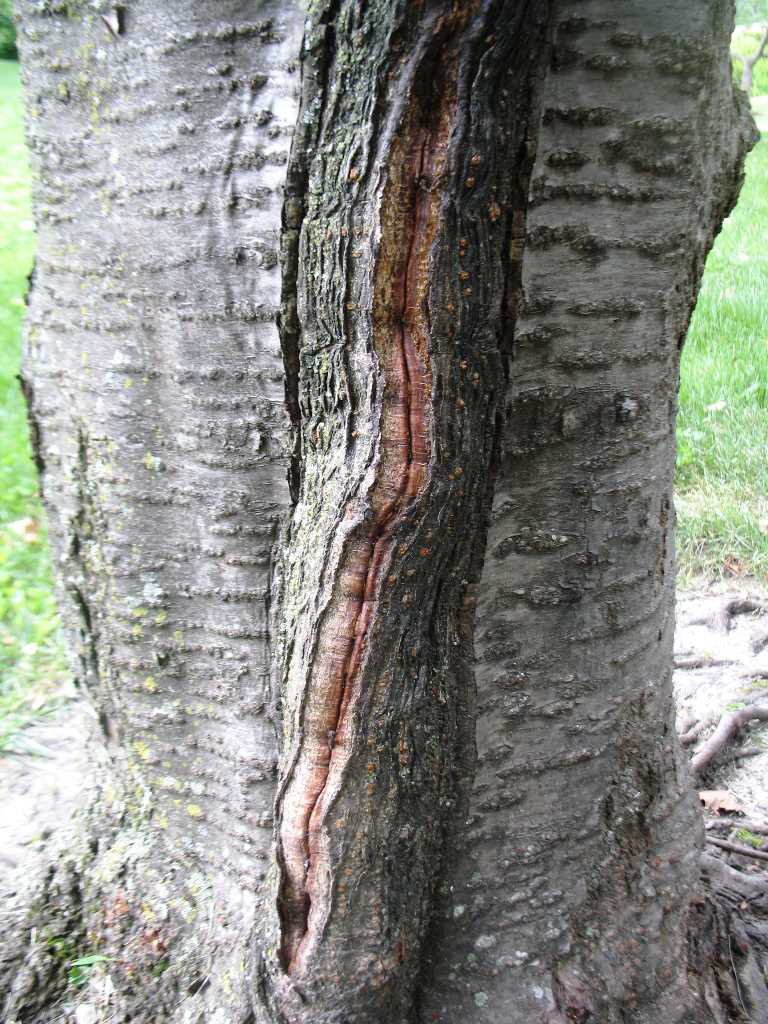 |
| Healed vertical frost crack on cherry (Prunus) |
|
|